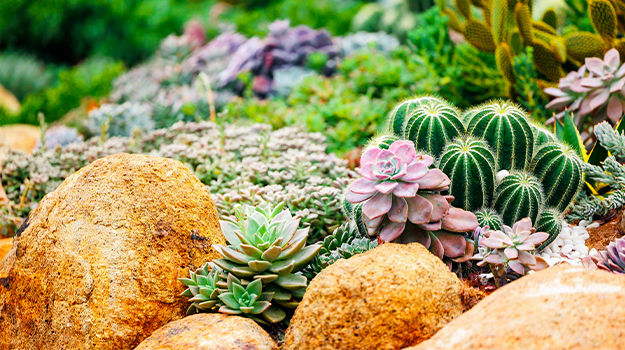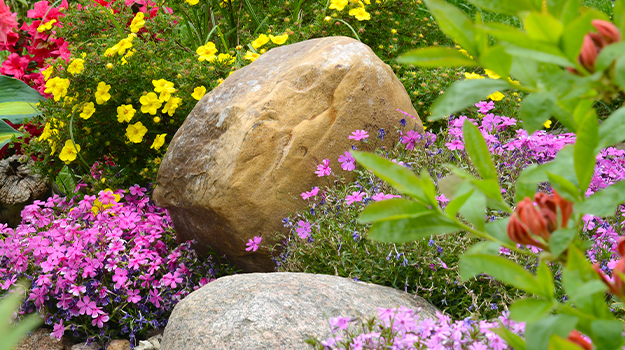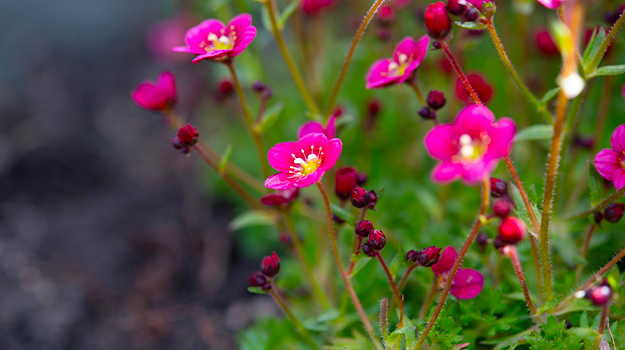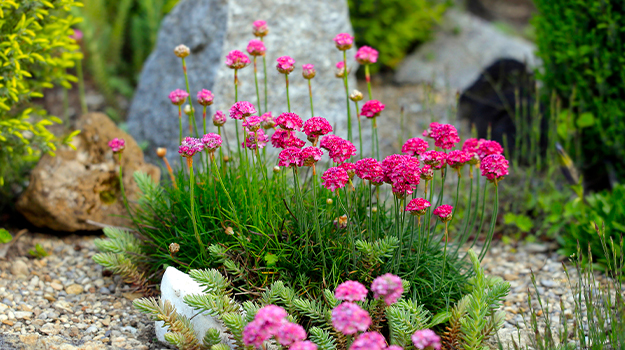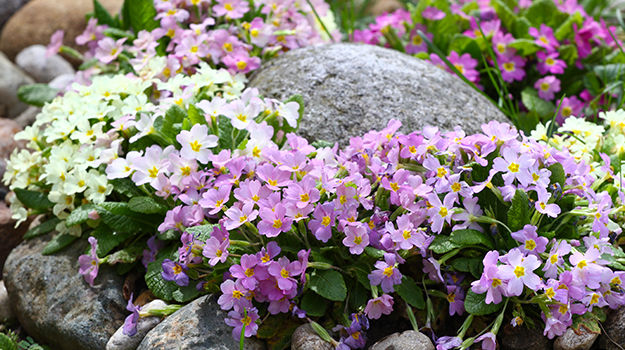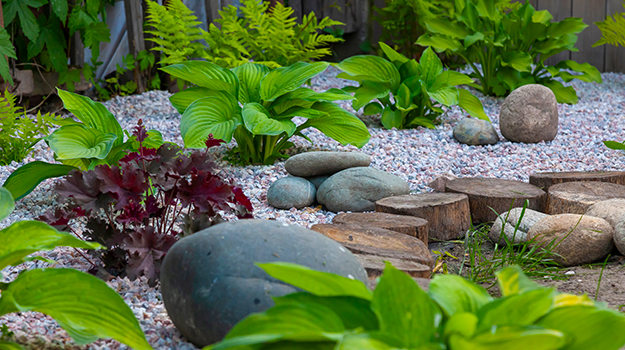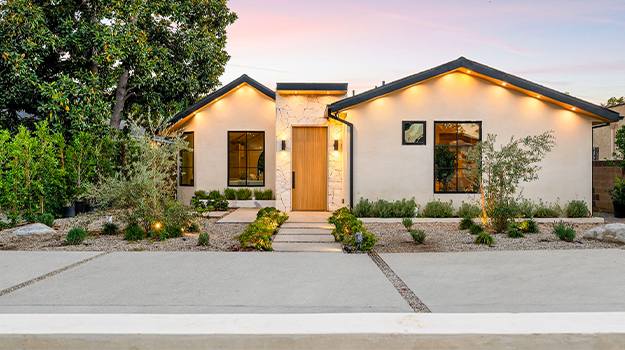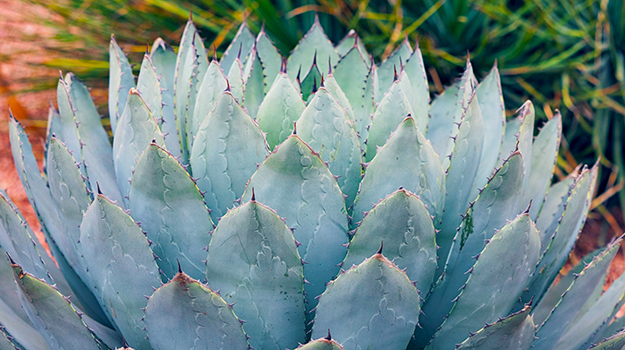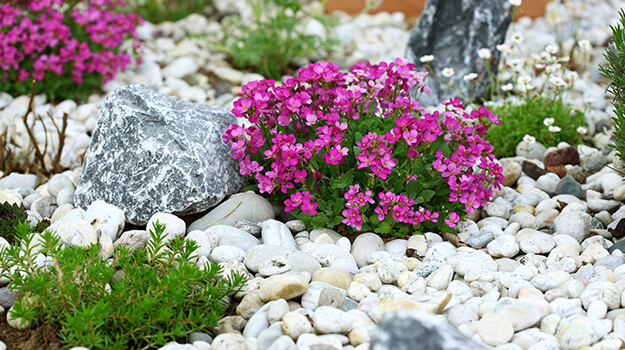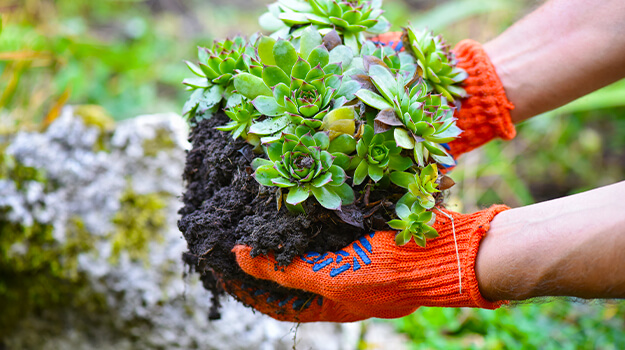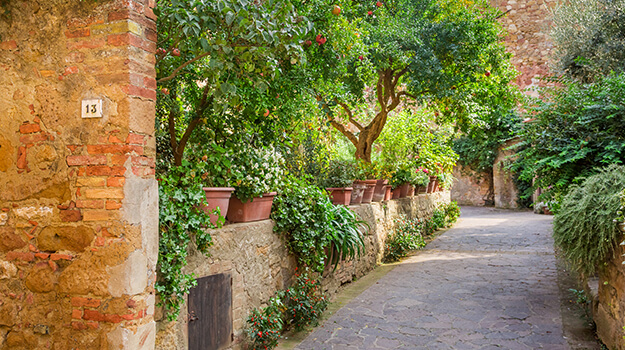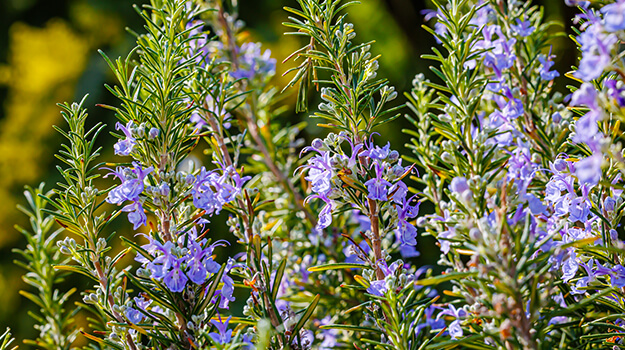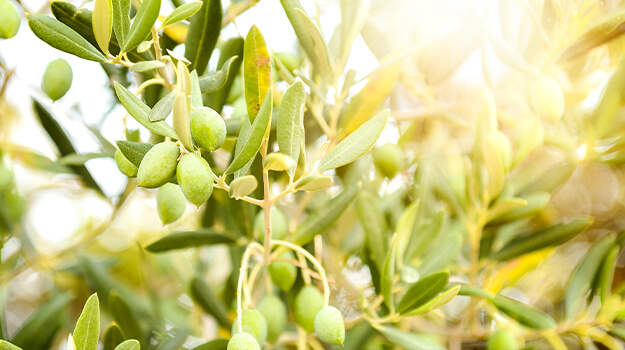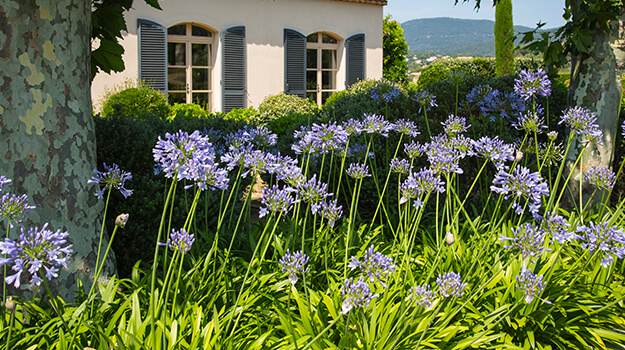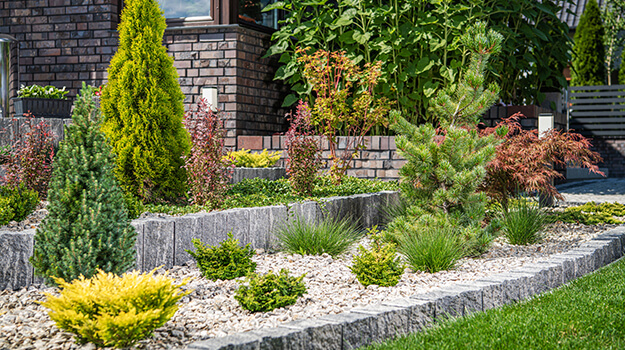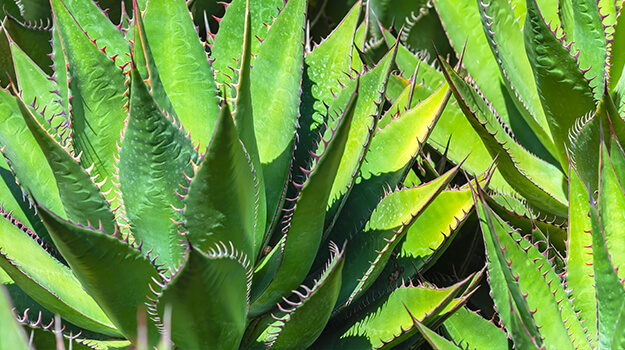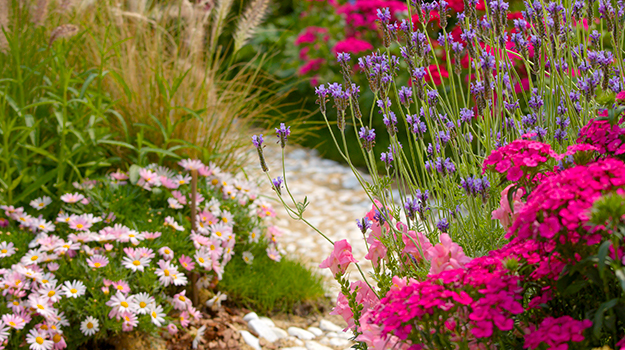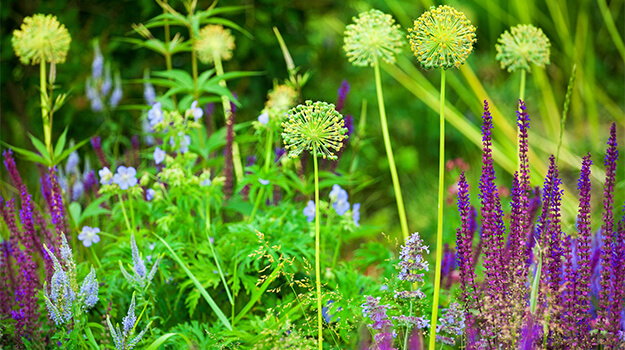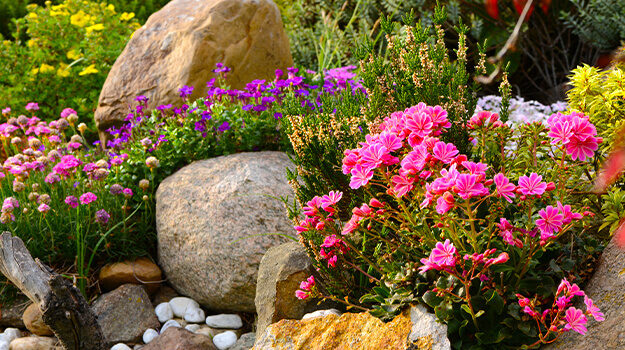TABLE OF CONTENTS
There are five types of gardens or landscaping techniques that feature plants that require little water and can thrive in dry, poor soil. This is a great advantage for the gardens of tomorrow, which will have to cope with increasingly hot temperatures and prolonged droughts while limiting their water consumption.
Many use natural materials such as stones or minerals. However, although they may initially appear to have many similarities, their objectives and characteristics differ.
Note that it is possible to combine different approaches to create a garden that is both aesthetically pleasing and water-efficient. In the same way, it's possible to modify your garden little by little to make it more resilient, less demanding in terms of time and energy, and, at the same time, better able to cope with climate change.
Rock gardens, alpine gardens, dry gardens, Mediterranean gardens and xeriscapes... how to navigate them all
A rock garden is a primarily decorative landscaping design that incorporates stones, rocks and plants that are most often adapted to dry, sunny conditions. The alpine garden is a type of rock garden designed to recreate a mountain environment. It features alpine plants, which are also resilient but primarily adapted to the cold and windy conditions found at higher altitudes.
The dry garden, or mineral garden, emphasizes mineral elements (stones, gravel, pebbles, sand), which are complemented by plants that require little water. Highly graphic, it creates Zen-like environments and particularly enhances contemporary-style homes.
The Mediterranean garden is inspired by southern Europe. It borrows its plants, but also its essence, distinguished by its warm colours, varied textures and soothing atmosphere.
Finally, a xeriscape is a landscaping style that defies climate change. Requiring little maintenance, it emphasizes water conservation by using drought-resistant plants and minimizing watering needs.
Why choose a rock garden?
A rock garden is a landscaping technique that emphasizes the aesthetics of an arrangement of rocks and plants.
The main objective: A rock garden is primarily decorative. It consists of rocks of various shapes and sizes, as well as perennial and annual flowers, small shrubs, dwarf conifers and groundcovers.
Type of design: A rock garden incorporates rocks and stones of various sizes and can feature slopes and flat areas that add relief.
Perfect plants for a rock garden
This type of garden features a variety of rockery plants, many of which are adapted to dry and poor soils, such as saxifrages, sempervivums, edelweiss and gentians.
Tips for maintaining a rock garden
A rock garden may require regular watering depending on the plant varieties used, but watering needs can be minimized by choosing drought-tolerant plants. Occasional weeding is also recommended.
When is the best time to start a rock garden? Any season is suitable for a rock garden. However, soil that is difficult to work (rocky or clayey) will be easier to dig in spring, when it is cool and moist, than in summer, once it has dried out.
PRO TIP: Make sure to water regularly and deeply until your plants are well established. If you're planting late in the season, use MYKE to accelerate root development so your plants are ready to face winter and are firmly anchored before the spring rains.
Learn how to create a rockery or alpine garden here.
What defines an alpine garden?
The alpine garden is a natural design inspired by mountainous regions.
The main objective: To recreate a miniature mountain environment with rocks, slopes and well-drained soil. It highlights alpine plants that have adapted to the cold, windy and nutrient-poor soil conditions.
The type of design: The alpine garden is ideal for landscaping a slope in full sun that is difficult to mow, has difficulty retaining water or where the lawn is often too exposed. Although alpine gardens often consist of full-sun plants, they can also be created in shaded areas by choosing the right plants.
Perfect plants for an alpine garden
Alpine plants include edelweiss, gentians, saxifrages, bellflowers, dianthus, aubrieta, some asters, yarrow, sedums, euphorbias and dwarf pines.
See the list of plants to use in an alpine garden or rock garden.
Tips for maintaining an alpine garden
While an alpine garden is a great option for areas that are difficult to plant, maintaining it will require balance and a few acrobatics, especially on steep slopes. To make things easier, consider creating platforms and make sure the rocks are stable.
PRO TIP: Creating platforms supported by rocks facilitates plant rooting and helps reduce soil erosion until the roots are able to do so.
Why choose a dry garden or a rock garden?
The rock garden differs from other types of gardens, notably by the use of mineral mulch. Gravel, pebbles, sand, rocks, slate, stepping stones and flagstones play a prominent role. This type of garden is very different from others, as plants are secondary and inert elements are emphasized.
The main objective: The rock garden is primarily decorative. Its minimalist and graphic style aims to enhance modern and contemporary decors.
Type of layout: Between the plants, the dry garden's soil is almost entirely covered with gravel, pebbles and decorative stones. A few harmoniously positioned rocks serve to reinforce the mineral aspect of the layout. It features paths, statues, benches and more. The various elements are refined and made from raw materials (ceramic, stone, wood, granite, etc.).
The best plants for a dry garden
A dry garden also relies on plants that are resistant to drought and high heat, such as succulents, cacti, ornamental grasses, lavender, rosemary, shrubby sage, gaura, rockrose, tamarix and sea buckthorn.
Find the list of plants to use in a dry garden.
Tips for maintaining a dry garden
Creating a dry/mineral garden can be expensive, both in terms of materials, labour and machinery, since unless it's modest in size, a dry garden is difficult to create entirely by yourself. The advantage is that, afterwards, its maintenance will generally be limited to a quick cleanup after winter.
Why choose a dry garden?
A dry garden is an interesting alternative for people who want a maintenance-free garden or who wish to completely eliminate their lawn in certain areas of their property (front of the house, around the pool, etc.). It creates a sustainable, attractive and environmentally friendly outdoor space.
Well-suited to hot, dry climates, it requires no mowing or watering, making it a great option for those who don’t have much time.
PRO TIP: Loosen and prepare the soil thoroughly before planting. Once the aggregates are installed, any intervention will become virtually impossible. Water the plants deeply until they are well established and, if necessary, use liquid fertilizer. The great advantage of this type of garden is that it requires virtually no maintenance afterwards.
How to create a Mediterranean garden
The Mediterranean garden is characterized by plants that are resistant to heat, drought and wind, and by well-drained soil. It’s also maintenance-free and requires little water, it focuses more on colour and textures, appealing to the senses with textures and fragrances that give it a warm and soothing ambiance reminiscent of southern Europe.
The main objective: A Mediterranean garden aims to create an outdoor space that combines aesthetics, simplicity and respect for the environment.
Type of landscaping: Gravel paths, dry stone walls, natural stone, stoneware or porcelain terraces, rockeries... The Mediterranean garden has a unique ambiance where each element is carefully chosen. Flower pots also have pride of place, emphasizing the variety of shapes and designs of the ceramic pots. Small shrubs, ornamental grasses and low-water-demanding plants are planted.
The Mediterranean garden awakens the senses with plants with fragrant, brightly coloured flowers and leaves that dance in the wind. Lavender, rosemary, olive trees, cypresses, passion flowers, agapanthus, thyme, palm trees, bougainvillea and oleander are good examples.
Tips for maintaining a Mediterranean garden
Mediterranean plants are water-efficient and disease-resistant, making garden maintenance simpler.
TIP: As it will benefit from maximum sun, the Mediterranean garden is ideally oriented towards the south.
Why choose a Mediterranean garden?
Offering an attractive aesthetic, low maintenance and contributing to biodiversity, the Mediterranean garden offers many advantages. Inspired by the climate and vegetation of southern Europe, it offers a relaxing and fragrant environment, while being adapted to the climatic conditions of many regions, including those with hot and dry summers.
PRO TIP: Mediterranean plants prefer porous, stony and calcareous soils. Excellent drainage is essential for them since they hate standing in water.
Check out our list of plants to choose from for creating a Mediterranean garden.
What are the characteristics of xeriscape design?
Xeriscaping is a gardening approach that focuses on reducing water consumption by favouring the use of plants capable of surviving in dry or arid climates.
Main objectives: Save water and reduce maintenance time.
Type of design: Although often minimalist in style, it can also resemble or be integrated into a more traditional garden by relying on natural materials such as stone or wood mulch. If you want to transform your garden to make it more drought-tolerant, xeriscaping is an excellent alternative since it doesn't require a drastic change.
The perfect plants for xeriscaping
The plants used in xeriscape design are drought-tolerant. You can also choose alpine plants, Mediterranean plants or even the plants found in dry gardens.
Tips for maintaining a xeriscape garden
It requires very little watering once the plants are established. Weeding is also minimal, and pruning is only necessary to remove damaged branches after winter or, exceptionally, to reduce the size of the plants.
When is the best time to xeriscape?
It is ideally done in the fall. The late-season rains, as well as those the following spring, give the plants a chance to establish themselves well before the intense summer heat.
Learn more about xeriscapes here.

